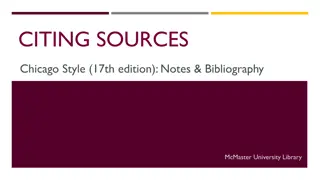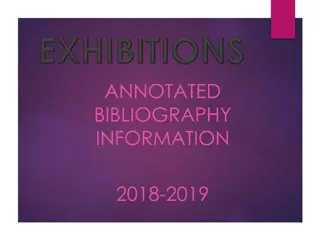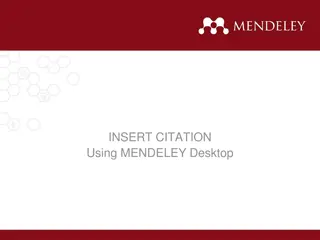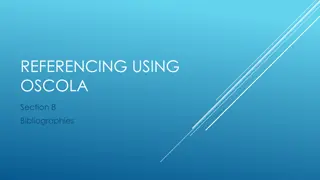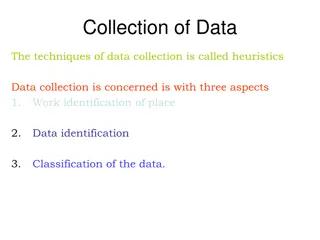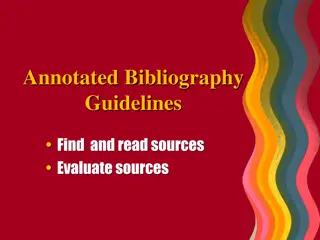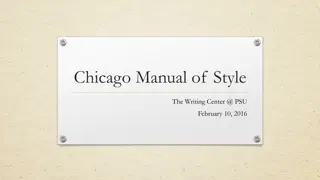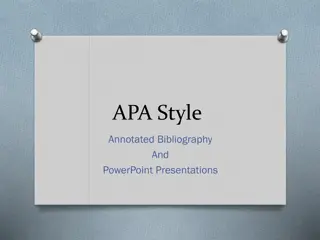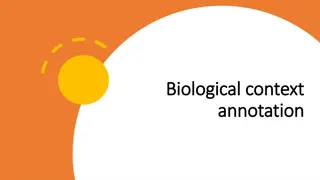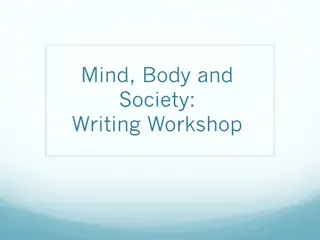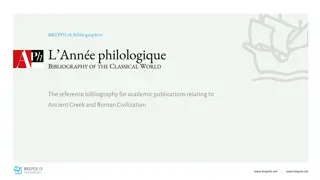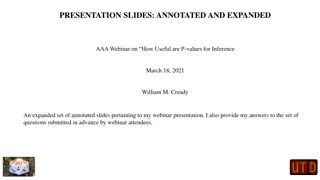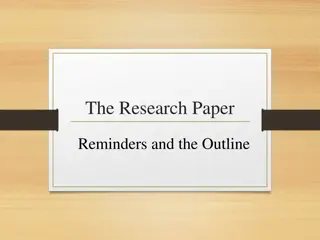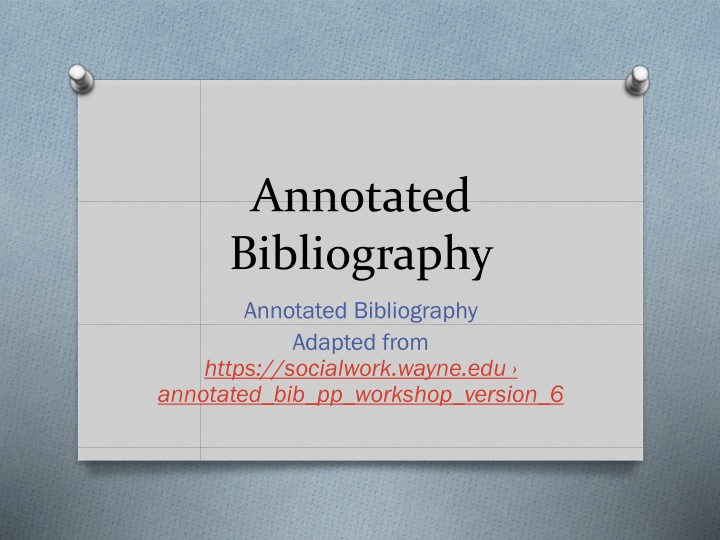
Mastering Annotated Bibliographies: Essential Guide for Research
Learn how to create effective annotated bibliographies to organize research, summarize sources, analyze content, and reflect on their relevance to your project. Understand the key components of annotations such as summarizing, analyzing, and reflecting, making your research more structured and meaningful.
Download Presentation

Please find below an Image/Link to download the presentation.
The content on the website is provided AS IS for your information and personal use only. It may not be sold, licensed, or shared on other websites without obtaining consent from the author. If you encounter any issues during the download, it is possible that the publisher has removed the file from their server.
You are allowed to download the files provided on this website for personal or commercial use, subject to the condition that they are used lawfully. All files are the property of their respective owners.
The content on the website is provided AS IS for your information and personal use only. It may not be sold, licensed, or shared on other websites without obtaining consent from the author.
E N D
Presentation Transcript
Annotated Bibliography Annotated Bibliography Adapted from https://socialwork.wayne.edu annotated_bib_pp_workshop_version_6
Purdue OWL website I use in video O https://owl.purdue.edu/owl/general_writing /common_writing_assignments/annotated_ bibliographies/annotated_bibliography_sam ples.html
Annotated Bibliography O Combines the bibliographic reference with an annotation. O Annotations can be just a couple of sentences, or multiple paragraphs (depending on your professor s preferences). O Useful outside of the annotated bibliography assignment. O Helps organize research, references, and ideas before writing a paper.
Annotation O Annotation is useful for any text O Journal articles O Book chapters O Books O Summary and/or analysis of text. They can serve the following functions: O Summarize the source O Evaluate the source O Reflection
Summarize O What is the source about? O What argument(s) is the author making? O Explain the source in your own words O Summary allows you to think about the source in your own way
Analysis O When we analyze, we are thinking about how useful the source is: O What does the source mean for your topic? O Does it fit in with other items you are annotating, or with your research idea? O Is the source useful? O Does the author appear credible?
Reflection O Think about what the source means to you and your research. O Was the source useful for you? O Did it expand your understanding of your topic? O How can you use this source in your project?
Reflection (cont.) O What are the main points of the source? O Are the arguments and evidence in the source weak or strong? O Does it provide supporting data? O Does it suggest solutions or improvements? O If a policy does it mention a specific bill? O Does it provide or address any policy analysis criteria?
Bibliography O A bibliography is another word for your style Reference Page O It lists all of the sources you cite in a research project. O It includes only bibliographic bibliographic information O Author, Title, Publisher, Year, and Page Range O The annotated bibliography can help you create your Reference Page for research projects.
Short Annotations O Provide a brief summary O Are good for broad overview O Are good for practicing concise writing O Are especially useful for keeping track of sources in your own research O Get the major points O Highlight the usefulness/relation of the source in relation to research topic

